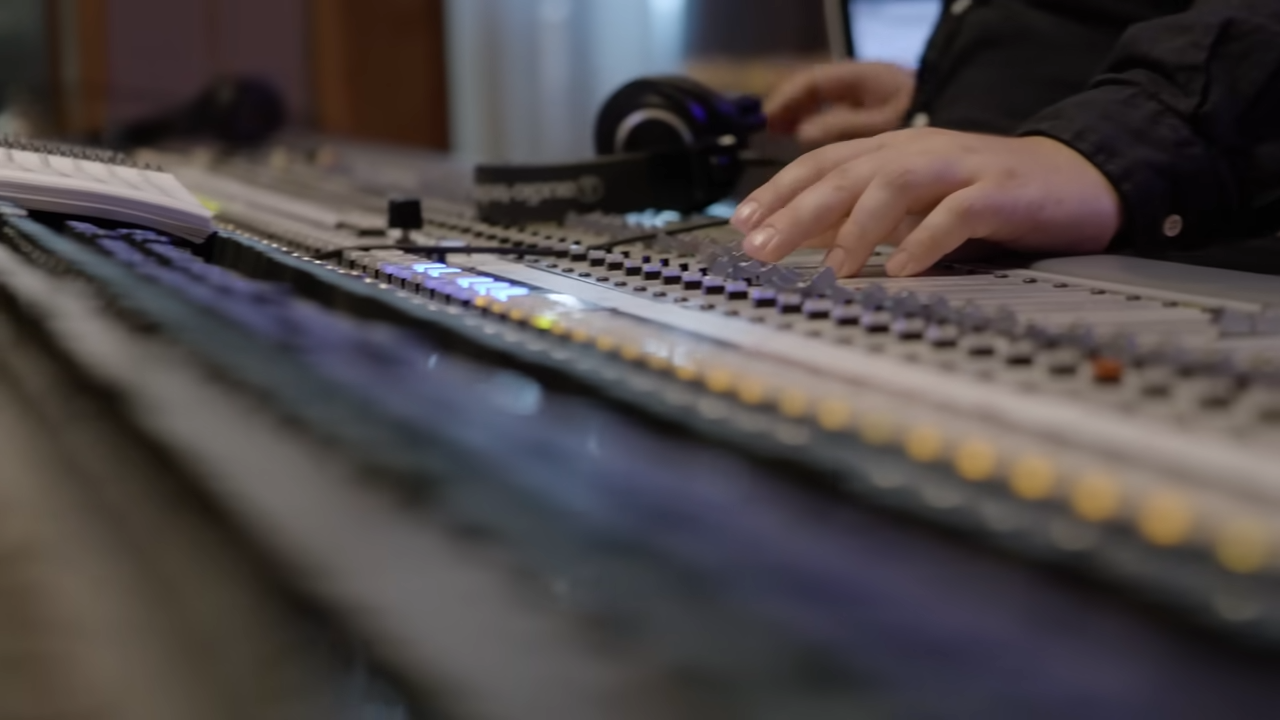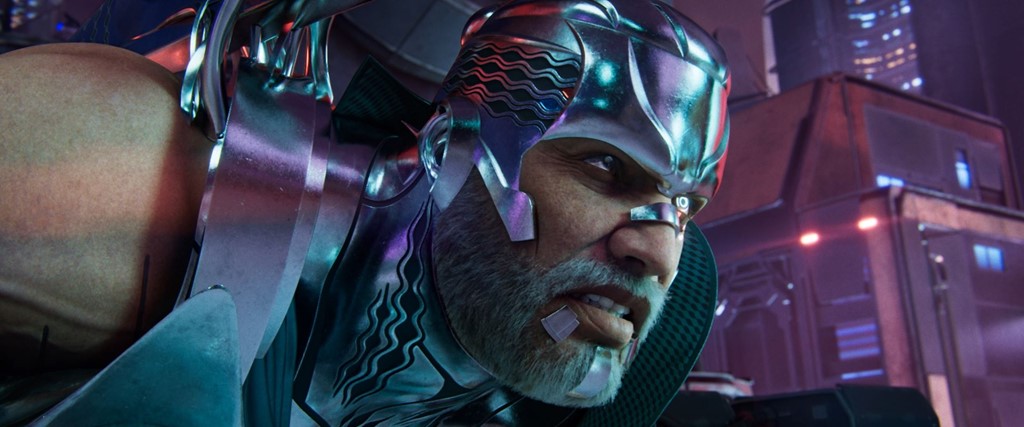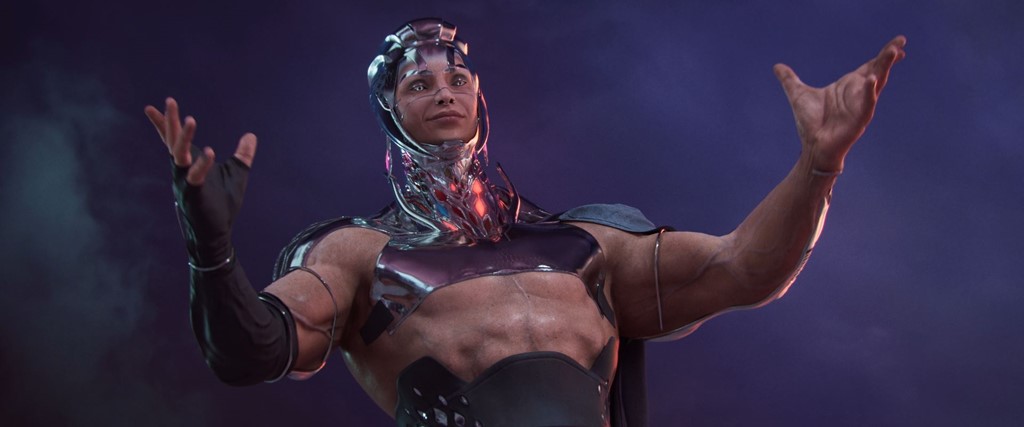Source: https://www.bungie.net/7/en/News/Article/destiny-2-lightfall-music-doc
The sounds of any game can make or break the experience for its players. Many of our favorite adventures come roaring back into our minds when we hear a familiar melody, or maybe it's a special sound effect that reminds us of our time performing a particularly heroic feat... or the time we just caused some havoc with friends. With Lightfall sending Guardians to explore the new destination of Neomuna, there’s an entire universe hidden away within the sounds—both orchestral and diegetic—for Guardians to uncover and immerse themselves in. We recently assembled some of Destiny's finest sound designers and composers to dive a little bit deeper into the stunning depths of Neomuna’s auditory experience.
Before diving into the interview with our incredible team, we wanted to make sure you have seen the Lightfall music documentary that went out shortly after the expansion’s release. This short video is a great introduction to how our team worked to create the music of Lightfall and is a must-see for audiophiles and Destiny fans alike.
Now onto learning more about Lightfall’s sounds with Senior Lead Evan Buehler, Senior Systems Designer Juan Uribe, Senior Designer Cameron Konner, Senior Designer Paxson Helgesen, Designer Matthew VanKleeck, and Audio Director/Composer Skye Lewin.
What Do We Actually Do?
Crafting the perfect blend of sounds to reflect the endless possibilities that games offer is an incredible task that creative folks love to take on, but what does this process look like and what are some of the biggest misconceptions regarding this field of work?
According to Lewin, the biggest misconception that he sees as a composer is that there is just this big orchestra crammed into a tiny room and everyone plays to their heart’s content and that’s that. Job done. Straight from room to game, nothing more. “It couldn’t be further from that,” he explains. “We have to break the music we create up into lots of little chunks so that they can be reassembled dynamically as the game itself is played.” It needs to make sense; the audio needs to flow with the visual.
While the entire team agreed that this process is like an incredible puzzle to solve, Uribe said that the sound design aspect of creating depth to these worlds is so much more than “just pushing a bunch of levers up and down.” There’s planning, there is a workflow that must coincide with other teams, especially the technical aspect of game design. Sure, sound levels matter—making sure nothing is too loud, or too soft—but there’s so much more to it.
“Games are complex,” Uribe explains. “It’s not as simple as just caring about the level of noise. For example, when players are going wild with something that makes an explosion sound, that audio effect may be louder than intended not because of the volume in the traditional sense, but the number of explosions going off at once. That’s where creating distance attenuation comes into play, making sure you hear that particular sound at 20 meters versus fifty. Making sure that anything auditory interacts well with the game is a problem that we solve, but it’s a more involved process than many may think.”
“When looking at even what people think when they hear ‘mixing,’” adds Buehler, “that topic is really subjective. That’s always the tough part because there really isn’t a universal answer and a lot of practices are rooted in human opinion versus solely following a formula.” He smiles, clearly proud of his team, and adds, “Like this group. We know we have differing opinions on specific processes, different interpretations of sounds, but it’s that collaboration and coming to that consensus where the magic happens.”
It’s a problem folks like this crew love, especially when experimenting with different sound strategies. Enter Cameron Konner, a Destiny 2 developer who saw an opportunity to improve the “how” portion of the audio equation by creating a new system that allowed numerous teams to have the support needed for this type of work.
Konner’s entire team couldn’t sing his praises enough for how he helped streamline the overall process. “He did things to our mixing process that we’ve never had and things we’ve always wanted,” said Buehler. Lewin expands on how Konner’s plans helped the wider team’s process, saying, “We have had two separate parts of our system for how we play music back and allow for those sounds to do two different things, but we couldn’t ‘glue them together’ in the past. The process of implementing music always had to have separate approaches and what Cameron did is he made them work together in a way that opened so many cool doors for us, creatively speaking. Don’t let him undersell it, it’s a pretty big deal.”
Konner’s role in development was massive for hitting deadlines and making the process as smooth as possible. “For me, I got to see a system go from a whiteboard idea when it’s just a concept to then working with the teams to make this thing, this project happen,” he said. “We talked about ways to accomplish those goals and came up with all sorts of workflows to get Lightfall to the finish line. In carefully restructuring said workflows, we unlocked a lot of potential for our teams and started asking ourselves how we can utilize all this new tech in ways that both benefits us and makes a better experience for our players.” By streamlining that workflow, allowing for a better way to coagulate and mix sounds from a shared library, Konner and crew were able to maximize time in-studio to allow for more time to create and less reliance for redundancies; like smashing two different approaches together as Lewin stated. This streamline also aided in creating the voices of two new faces to Destiny 2, our Cloudstriders.
A Tale of Two Cloudstriders, Creating a New Type of Voice
Both Rohan and Nimbus have unique voices, with the latter leaning into a playful and vibrant technologically driven timber. Creating these voices was a fun task and if you’re a fan of PlayStation, one aspect was just plain fun. “Nimbus is kind of a sleek, cutting-edge PlayStation 5, if you think about it, at least in relation to sound,” said Destiny dialogue designer Matthew VanKleeck on the heart of what makes the younger Cloudstrider voice so unique. During the process of creating the voice of Nimbus, the team utilized electromagnetic frequency recordings of actual PS5 consoles as one of the mixing components. According to VanKleeck, disk tray sounds, the sound of turning the console off and on, and more all played a part of the mix that is this unique voice and its sound.
Rohan's gruff articulation is in contrast to Nimbus, whose voice contains more distortion than their mentor. Because of the differences between the two and the differences between Cloudstriders and other folks we’ve met in Destiny, the work between the audio design, music, and the narrative teams was intricate, especially when nailing that older synth-action-movie feel without breaking that flow with the music of Lightfall. In short, it was just the right kind of challenge that the team was built for.
According to VanKleeck, “[The] 80s action movie effects with Nimbus worked perfectly with what we were envisioning when looking at the future neon aesthetic of Neomuna. The one thing I really enjoy about the sound of our Cloudstriders is that their voices harmonized with the music and almost became an instrument in itself.”
If you’ve paid close attention, you may notice that Nimbus, in particular, sounds layered—the reason for that is that their voice is comprised of 12 different musical keys (and one atonal) to allow for more harmonization options for the Cloudstriders depending on whether or not there is music playing during gameplay. The team also needed to factor in how Cloudstriders interacted with the world – how do they sound far away? What about when they’re speaking to Osiris versus ogling over Caiatl (Same, Nimbus, same...)? How do they sound as an interactable vendor? Take that puzzle and add that each sound had to land just right to make up the whole picture and that’s even before making sure that the auditory experience matches up when translated into 12 different languages. Tricky stuff, but we can all agree: impressive.
Darling, Darling, Strand By Me
Speaking of unique Lightfall sounds... If there’s one thing we know, it’s that Strand is rad. And not just because that green looks radioactive. If you love the fantasy of swinging in like a total hero, then you may be interested in learning about another puzzle to solve with Lightfall: What is Strand? In the audio world, that newest Destiny 2 subclass definition takes on a different meaning. And one that happened to rely on old leather gloves.
When we first revealed this epic new subclass, players weren’t sure what to expect. How versatile was the movement in-game? How did it sound? Does it make you into a total badass? The answer to that last question is so obviously “yes,” but as for the rest: Strand has a lot to offer, and it was important to have the audio experience reflect that.
According to Uribe, “The first thing we had to do when planning Strand’s sound was to define certain pillars like ‘What would it sound like?’ and ‘What did we absolutely not want it to sound like?’ We knew we didn’t want it to be too synthesized, we didn’t want it to lose that organic sound. With the look of it, we wanted to create the audio sensation of pulling and ripping fibers.” And that’s where the fun came in. You may remember from our previous audio blog that this team has used some pretty wild resources in the past to create their desired sound. While there were no babies involved (we think!?) this time, they did get to have some fun crafting that specific ripping sound Uribe describes. “We used things like old leather gloves or purses and would just rub them like mad. Workout rubber bands, plastic packs, any furniture laying around—especially with stretching out any fabric. Oh, and balloons. Rubber balloons and fingers definitely played a role. We just used a bunch of stuff.”
He added that this portion of the process, the source sound testing portion, is the most fun and a large part of that is due to the team dynamic. “It’s not just the systems team that does this, it’s the entire audio team at Bungie. We’d all contribute our little source files into this huge library and just jam out. Once the library is looking how we want it, that’s when we start piecing it all together.”
“You know how Strand is just a bunch of strands coming together to make up something solid?” Uribe asks. “To me, taking all of these different sounds to create this final sound where you have the DNA of that sound that has a little bit of Buehler, a little bit of me, a little bit of Helgesen. We take that and bring it all together, the whole process is just really cool.”
“That’s only a small part, the entire journey from start to finish is a wild one sometimes, but the end always makes the ‘Where am I, what am I doing?’ moments worth it,” - Buehler
Senior Sound Designer Paxson Helgesen agrees, though he is quick to highlight some of those anxieties that come up during the beginning stages of this process. “I just want to add to this because I feel like sometimes, we don’t even realize how we are going to approach a new sound at first. I think every time I get a weapon concept to work on, I’m just like ‘Oh my god, I have no idea what we’re going to do with this. How the hell is this supposed to sound?’ I have a mini-freakout session every time and then I calm down, take some breaths, and just focus on jamming with the team. Our jamming sessions, they’re like our secret sauce.”
Buehler laughs in agreement, adding, “Definitely could add that to the ‘misconception’ pile. People tend to think that you know what a sound is going to be at the very beginning and that the only process that’s involved is simply making the sound. That’s only a small part, the entire journey from start to finish is a wild one sometimes, but the end always makes the ‘Where am I, what am I doing?’ moments worth it.”
That melding of the minds and the mini-freakout sessions sound about right for any creative process. We are our own worst critics sometimes but the path to creativity is worth it even with those momentary lapses in faith. OK, so small pep-talk aside, the collaborative work in audio is immense and so vital to the process. It’s not one person’s perception or lens, it’s a multitude of minds coming together, and that’s exactly what they did when crafting the auditory bliss that is wielding the fabric of the universe.
The Hardest Part is Saying Goodbye
“There’s one quote that I always think of and that’s ‘You never actually finish things, you just have to stop’,” reflects Lewin when reflecting on what the hardest part about the process is: saying “goodbye.” Just like any artist, any craftsman; these creations are their babies and if you dedicate years to the evolution process of watching these proverbial babies grow, it can be hard sometimes to let go and hand over the reins to players.
Think of it almost like a love letter, especially the part mentioned earlier about how the final product contains the DNA from each person that worked on it. A finished sound, be it musical, voice rendering, or sound effects, is a love letter to players from the team itself, but that doesn’t make saying goodbye any easier. Once you’re done and the game (or expansion!) is shipped, it’s out of your hands. It’s now up to the players to decide what they like and don’t like, what they understand versus what melts into the background. It’s up to the player to interpret as they see fit, and it’s up to the teams to watch it all in real-time and appreciate the moment where that effort sees its intended purpose: to make a really heckin’ awesome experience for players on a global scale.
Destiny 2 has had some wild story beats in the past and the journey is far from over. Now that we’ve learned just a little more about the complex process of creating an entirely unique layer to worldbuilding, I want you to do one thing: Next time you boot up Lightfall, just listen. When you’re stopped on your Sparrow, when you’re chilling in front of a vendor, when you’re swinging from tangles all willy-nilly like—just listen and try to pick out the different sound components used in that moment. It’s a fun little exercise that provides a more intimate relationship with this world, making it more real and making us—the player—more connected. So get out there, Strand to your heart's content and enjoy Lightfall, and its hidden world of audio, with your eyes and your ears
We’ll catch you next time, Guardians.
External link →




